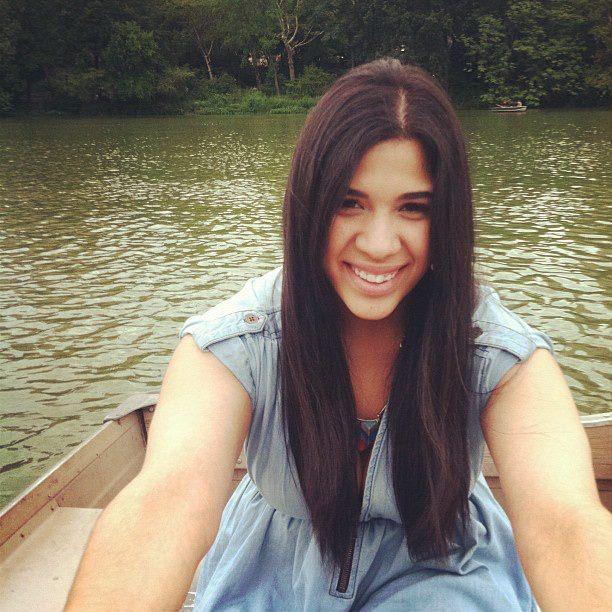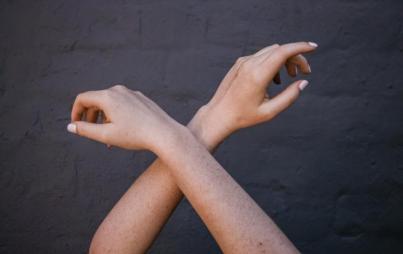
If there's one thing we really love, it's women who stand up for what they're passionate about. Patricia Valoy is one such woman. She's a civil engineer who isn't afraid to get down and dirty on a construction site. She's also an advocate for women in Science, Technology, Engineering and Math (STEM) and has huge goals of helping to ensure that kids get the education they need to be able to pursue STEM careers.
Valoy's writing can be found on her blog, Womanisms, and she has also written for Policy Mic, Everyday Feminism, DoubleXScience and recently, she was one of our experts in Ravishly's new series, "The Conversation."
We caught up with Valoy to ask her about her work in advocacy and life as a Latin woman in STEM.
You’re a civil engineer at STV Inc, could you tell us a about what a civil engineer does? How did you find the strength to pursue a career in STEM in the face of so much gender inequality?
A civil engineer designs infrastructure systems like bridges, tunnels, railways and roadways, but they rarely work in all these fields at the same time, unless they are incredibly talented and well rounded. I studied civil engineering with a concentration in construction management because I consider myself a people person and wanted to be in a field that used my skills in math and physics, but also allowed me to interact with people and see projects come to fruition. After a short stint in construction I began to work for an engineering design firm and was placed in their transportation group.
I absolutely love what I do because I get to use a variety skills in my daily work life, but I’m often the only woman or one of few in every situation I find myself in. STEM fields are not particularly women-friendly due to stereotypes that dictate that men are better at math and science, but this gender gap is even more acute in transportation industries. Every day I remind myself that I need to succeed for other women that are looking up to me. It might seem like a burden, but it’s what fuels me. And on occasion I get to meet other amazing women in STEM, so I know I’m not alone.
You often write about how people are shocked because you’re so young and you’re a woman in STEM. Do you ever get sick of the reaction to your achievements?
I often recoil from the word achievements because I feel like I have so far to go! Yet I do feel that people don’t expect Latinas to be overachievers and interested in STEM fields, so I think that’s why people feel shocked when they meet me. I really do get tired of it because it shows just how little diversity there is in STEM, but at the same time it’s proof that my STEM activism is necessary and needed.

You are originally from the Dominican Republic and you write about it so honestly in your blog, Womanisms. How does that affect the way you see race and gender stereotypes?
Being Caribbean shapes my identity just the same way that my gender does. Race relations and identity in the Caribbean and Latin America are complex in ways that don’t always correlate with race identities in the United States. For this reason I find it crucial to speak about being a woman of color in the United States. In Caribbean colonialist standards I wouldn’t be a woman of color, yet I grew up in the United States always being an “other.” My interpretation of gender dynamics and racism is always formed by my lived experiences in the United States and in the Dominican Republic, which means they are sometimes contradictory. I have to be very aware of my audience when writing or speaking about these topics because it might not be relevant or I might be over-simplifying things. In the end, my goal is to make sure that feminists understand that for women of color our views are shaped by an intersection of identities that don’t always correlate to gender or sexuality alone.
You took a DNA test to see what parts of the world your DNA comes from and you got quite the surprise! What was your greatest takeaway from learning about your origins?
I can go on about ancestral DNA for decades. I think that taking the DNA test was one of the most positive things I have done to affirm my identity and claim my homeland. I was born in the Dominican Republic, which was one of the first islands to be colonized by Spain in the late 1400s. I knew my identity was multifaceted, but curious ol’ me just needed to know the details! Let’s all take a moment to thank science for this, ok? It was great to see my direct African and European heritage, but my biggest surprise was learning that I had some Native American ancestry. For a woman who thought all indigenous people in the Dominican Republic were obliterated, it was great to see that their legacy lives on in our daily lives. It also solidified my feelings of belonging to this land in a time when immigration reform is the top news topic and anti-immigration people are quick to yell “go home!” Going home to me is staying right where I am.
You are a serious advocate of women joining the STEM field (and we thank you for that!). What advice would you give women who would love to be in STEM, but feel held back by the gender stereotype?
Stereotypes are just the worst. There really is no way to avoid being stereotyped in STEM because the truth is that our society is generally sexist and racist, and that is mimicked in the classroom and the workplace, but it doesn't have to break you down. The most important thing to remember is that your job is to be great at math and science, so focus on that first! If you know your material you are already a future engineer (or any other STEM professional.) People will feel threatened and won’t know how to react to a woman in a traditionally male-dominated field, so prove them wrong. Also, make sure to join a professional organization for women to find lots of mentors and build a support network. When we all help each other they can’t break us down.
What is the best advice you have ever received?

If you had to distill your message into three sentences to share in a megaphone with the world, what would it be?
I am angry. I demand change. You have been warned.
You write about everything feminist and equality from immigration to sexual pleasure to STEM. Where do you get the ideas for your posts?
My own life! I could never write about a topic that I don’t have a personal connection to. We are rarely taught that our life stories are important and must be heard, so my writing is part therapy for me and building a foundation of work from an often marginalized perspective. The only way I can do that is by sharing my personal experiences on a particular issue. Not everyone will always be able to relate, but at least they can learn to understand these issues from a nuanced perspective and can associate it them to a real human. So many times our activism is about issues we learn are important and affect people, but we rarely get to see the people who are directly affected share their perspective.
Your articles can be found on Everyday Feminism, DoubleXScience and Flyover Feminism, as well as your personal site, Womanisms. Where else can we find your voice? Do you have any projects coming down the pipeline that we should be watching out for?

I have also written for Policy Mic and the Women’s Media Center. Further along I am working on developing a STEM outreach program that is geared toward building a curriculum that will ensure all kids have a good foundation in math and science. I’m tired of seeing tips for students that want to enter STEM fields that don’t address the education gap due to race, ethnic and class divisions. STEM outreach programs rarely focus on the lackadaisical requirements in math and science that high school students need to graduate, and put their focus on debunking stereotypes. This is great, and definitely needed, but I find that most of the students that would like to enter STEM fields (usually due to the high success of STEM outreach programs!) are simply not prepared [to] enter into an engineering program or any other science or technology majors. I want children to be excited for careers in STEM, but that means nothing if they can’t actually get accepted into college and succeed.
What do you do for fun when you’re not busy with your writing, your STEM work and your advocacy?
This is a tough question because I really do love writing and STEM advocacy. When I really need a break I like to listen to music by kick-ass women like Ana Tijoux or Arianna Puello and rock on while I clean my home. I also really love going to the green market to find the freshest vegetables and make delicious meals for me and my partner. This usually leads to buying more edible plants for my growing herb collection— because you can’t ever have enough thyme and mint! On particularly stressful days I plan future vacations to remind myself that I can disconnect and relax if I need to. And of course, rubbing my dog Blondie’s belly is the best de-stressor ever!






